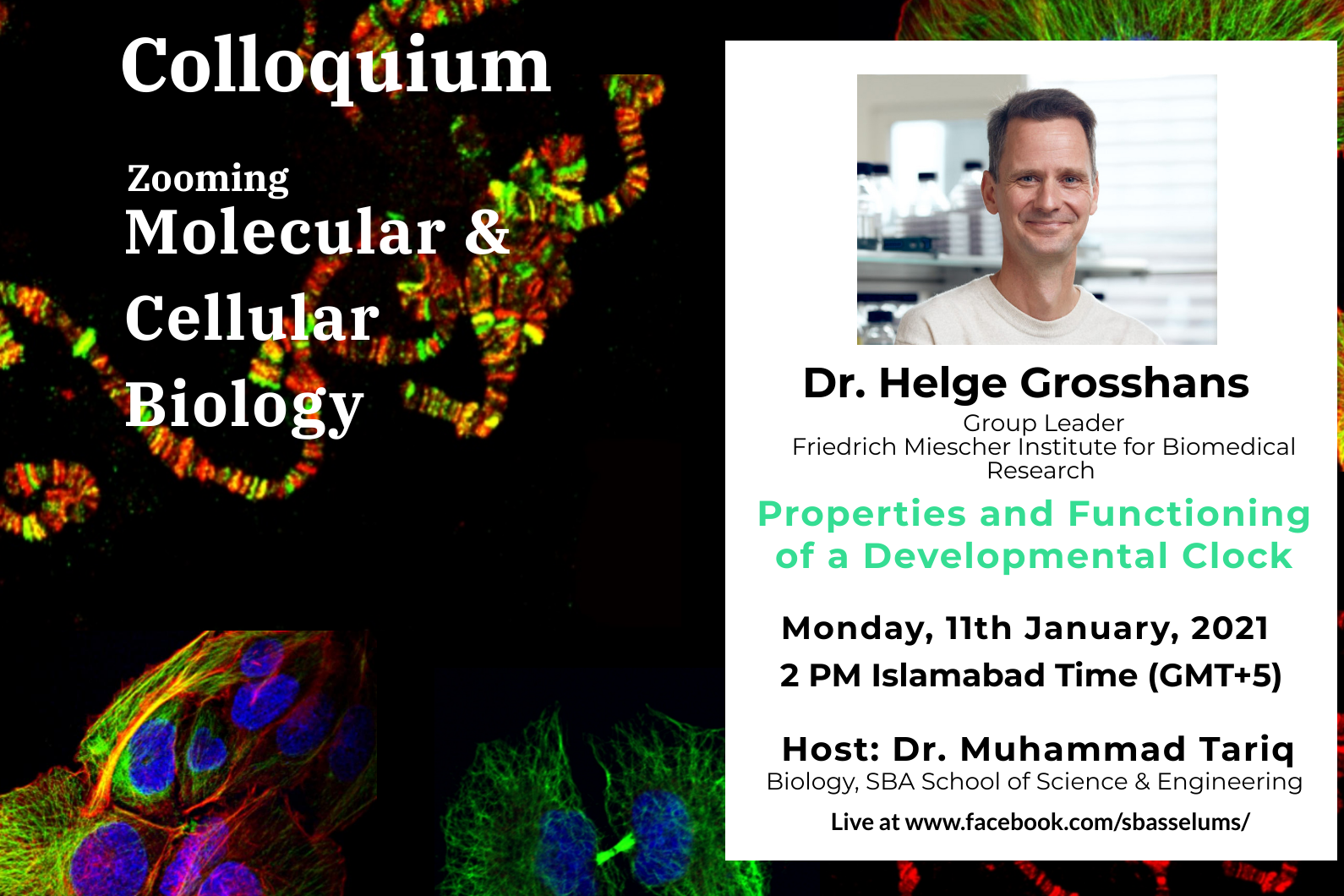
Properties and Functioning of a Developmental Clock
Helge Grosshans is a senior research group leader at the Friedrich Miescher Institute for Biomedical Research (FMI; a non-profit research organization affiliated with the Novartis Institutes for Biomedical Research) in Basel, Switzerland, and a Professor at the University of Basel. Following his studies of Biotechnology at the Technical University of Braunschweig, Germany, he did his PhD with Prof. Ed Hurt at the University of Heidelberg, Germany, working on RNA biogenesis and nuclear export in brewer’s yeast, Saccharomyces cerevisiae. Subsequently, he joined Prof. Frank Slack’s lab at Yale University as an HFSP postdoctoral fellow, to study the developmental and molecular function of microRNAs (miRNAs) in C. elegans. His work led to the discovery of the let-7 miRNA as a tumor suppressor gene regulating RAS.
In 2005, he started his own group at the FMI. Supported by highly competitive ERC Starting and ERC Advanced Grants, Grosshans’ work has focused on miRNA function and mechanisms of developmental timing. Among other breakthroughs, his group was the first to demonstrate that animal microRNAs are themselves regulated through RNase-mediated degradation and discovered that, in a reversal of normal function, mRNAs can modulate the levels of the miRNAs that target them. They also showed that miRNAs can exert biological function through regulation of one single target and that miRNA target repertoires are dependent on physiological context rather than being merely hard-wired by sequence. Following their discovery of massive oscillatory gene expression, affecting ~20% of the transcriptome in C. elegans larvae, Grosshans now focuses on characterizing the underlying machinery by combining theoretical and quantitative experimental approaches.

